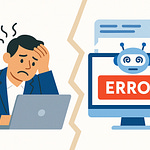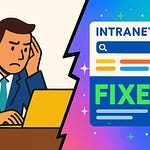Imagine a workplace where every team operates in harmony, trust flourishes, and productivity soars. Teams governance holds the hidden power to make this vision a reality. It creates order by defining clear structures and roles, ensuring that collaboration thrives without chaos. Without it, organizations often struggle to gather meaningful metrics or maintain data quality. A well-implemented governance strategy enhances trust and safety while aligning teams with organizational goals. By focusing on the right tools and metrics, you can transform your team's potential into measurable success.
Key Takeaways
Teams governance sets clear rules and roles to boost teamwork.
Check governance rules often to stay updated and work well.
Using good communication rules avoids confusion and keeps teams united.
Building accountability helps team members own their actions and work better.
Use technology to make governance easier and follow the rules.
The Hidden Power of Teams Governance
What Is Teams Governance?
Teams governance refers to the structured framework that ensures collaboration tools, such as Microsoft Teams, operate efficiently and securely. It involves defining roles, responsibilities, and policies to manage team creation, data sharing, and communication protocols. By implementing governance, you create an environment where teams can collaborate effectively while maintaining control over sensitive information.
Key components of teams governance include:
Customer: Managing user access and ensuring data privacy for individuals or organizations using your services.
Product: Establishing guidelines for how tools and features are utilized within teams.
Employee: Defining roles, compensation structures, and HR policies to align with organizational goals.
Sales: Monitoring transactions and revenue-generating activities to ensure compliance with company policies.
Governance also involves a clear process for managing terms and policies:
Subject matter experts evaluate the submissions.
The glossary owner approves the terms.
Approved terms are published in the business glossary for organizational use.
This structured approach ensures that every team operates within a defined framework, reducing confusion and enhancing productivity.
Why Governance Is Essential in Modern Workplaces
In today’s fast-paced work environment, governance plays a critical role in maintaining order and efficiency. Without it, teams often face challenges such as miscommunication, data breaches, and inefficiencies. A well-governed system ensures that your organization remains compliant with regulations, protects sensitive data, and fosters a culture of accountability.
Experts agree that governance frameworks significantly influence organizational culture. For example:
Transparency in decision-making improves trust among team members.
Ethical responsibility enhances the legitimacy of leadership.
Clear evaluation and reward systems boost employee morale and engagement.
Consider the success stories of companies like Sodexo, Microsoft, and Heineken:
These examples highlight how governance can drive measurable success by aligning teams with organizational objectives.
Risks of Neglecting Teams Governance
Neglecting governance can lead to significant risks that hinder collaboration and productivity. Without a structured framework, you may encounter:
Team sprawl: Uncontrolled creation of teams, leading to confusion and inefficiency.
Data breaches: Unauthorized access to sensitive information due to poor access controls.
Compliance violations: Failure to meet regulatory requirements, resulting in financial penalties and reputational damage.
For instance, unmanaged guest access in Microsoft Teams can expose your organization to compliance risks. This lack of control may lead to violations of regulations like GDPR or HIPAA, potentially costing millions in fines. Additionally, abandoned or ownerless teams can clutter your workspace, making it difficult to locate critical information and reducing overall productivity.
By prioritizing governance, you mitigate these risks and create a secure, efficient environment where teams can thrive.
Key Elements of Effective Teams Governance
Defining Roles and Responsibilities
Clear roles and responsibilities form the backbone of effective teams governance. When everyone knows their duties, collaboration becomes seamless. You can start by assigning specific roles, such as team owners, members, and guests. Team owners manage permissions, oversee team settings, and ensure compliance with governance policies. Members contribute to discussions and projects, while guests have limited access to maintain security.
To avoid confusion, document these roles in a centralized location. A shared file or a governance handbook works well. This ensures everyone understands their responsibilities and reduces the risk of overlapping tasks. Regularly review and update these roles to reflect changes in team dynamics or organizational goals.
Establishing Communication Protocols
Effective communication protocols prevent misunderstandings and keep teams aligned. Define how and where team members should communicate. For example, you might designate Microsoft Teams channels for project discussions and email for formal updates.
Set expectations for response times and message formats. For instance, urgent issues could require a reply within an hour, while non-urgent matters might allow a 24-hour window. Encourage the use of @mentions to direct messages to specific individuals, ensuring no critical information gets overlooked.
By standardizing communication, you create a structured environment where everyone stays informed and engaged.
Decision-Making Frameworks
A robust decision-making framework empowers teams to act decisively. Start by defining who has the authority to make decisions in different scenarios. For instance, team owners might handle operational choices, while strategic decisions require input from leadership.
Use tools like voting polls or decision matrices to streamline the process. These tools help you evaluate options objectively and reach consensus faster. Document decisions in a shared space to maintain transparency and accountability.
This structured approach ensures decisions align with organizational goals and fosters trust within the team. It also highlights the hidden power of governance in driving collaboration and success.
Conflict Resolution and Accountability Policies
Conflicts are inevitable when teams collaborate. However, resolving them effectively strengthens relationships and improves productivity. You need clear policies to address disputes and ensure accountability within your teams.
Steps for Resolving Conflicts
A structured approach to conflict resolution helps teams move forward without lingering tension. Follow these steps to create a resolution framework:
Identify the Issue: Encourage team members to share their perspectives openly. Focus on understanding the root cause of the disagreement.
Facilitate Dialogue: Use neutral language to mediate discussions. Avoid assigning blame and prioritize finding common ground.
Agree on Solutions: Collaborate to develop actionable solutions. Ensure all parties commit to the agreed-upon steps.
Document Outcomes: Record resolutions in a shared space. This promotes transparency and prevents future misunderstandings.
Tip: Train team leaders in conflict resolution techniques. Skilled mediators can defuse tensions quickly and maintain harmony.
Accountability Policies
Accountability ensures that every team member takes ownership of their actions. Without it, conflicts may escalate or remain unresolved. You can implement accountability policies by:
Setting Clear Expectations: Define roles, responsibilities, and performance standards. When everyone knows what is expected, misunderstandings decrease.
Tracking Progress: Use tools like task trackers or dashboards to monitor individual contributions. This keeps everyone aligned with team goals.
Enforcing Consequences: Establish fair consequences for failing to meet expectations. Consistency in enforcement builds trust and reinforces accountability.
Benefits of Conflict Resolution and Accountability
When you prioritize conflict resolution and accountability, your teams become more resilient. Disputes are resolved quickly, and members feel empowered to take responsibility. This fosters a culture of trust and collaboration, driving long-term success.
Note: Regularly review these policies to ensure they align with your organization’s evolving needs.
How Teams Governance Enhances Collaboration
Building Trust and Transparency
Trust and transparency are the cornerstones of effective collaboration. When team members feel informed and valued, they engage more deeply with their work. Teams governance plays a vital role in fostering this environment by promoting open communication and clear policies. For example, Coca-Cola's transparency initiative during a crisis improved employee engagement and operational efficiency. Similarly, Unilever's focus on supply chain transparency increased consumer trust and drove faster sales growth.
You can build trust by sharing goals, progress, and challenges openly. Encourage team leaders to communicate updates regularly and involve stakeholders in decision-making. This approach not only strengthens relationships but also aligns everyone with organizational objectives. Transparency also reduces misunderstandings, ensuring that teams work together seamlessly.
Streamlining Cross-Functional Collaboration
Cross-functional collaboration eliminates silos and encourages departments to work toward shared goals. Teams governance provides the structure needed to streamline this process. By defining roles, responsibilities, and workflows, you create a system where teams can collaborate efficiently. A Deloitte survey found that 83% of digitally advanced companies use cross-functional teams to stay competitive and agile.
Online collaboration tools further enhance this process. Approximately 56% of employers use these tools to improve communication and productivity. You can leverage governance to standardize the use of such platforms, ensuring that all teams follow consistent practices. This consistency fosters knowledge sharing and innovation, helping your organization achieve its objectives faster.
Fostering a Culture of Accountability
Accountability transforms teams into cohesive units. When members take ownership of their actions, collaboration improves naturally. Teams governance supports this by establishing clear expectations and tracking progress. For instance, creating cross-functional collaboration avoids blame culture and encourages teamwork toward common goals.
Transparency within a culture of accountability builds trust and aligns efforts. Positive accountability also motivates teams to share rewards and celebrate successes together. By implementing governance policies that emphasize accountability, you empower your teams to rely on each other and achieve better outcomes.
Tip: Regularly review accountability policies to ensure they remain relevant and effective as your organization evolves.
Strategies to Harness the Hidden Power of Teams Governance
Leveraging Technology for Governance
Technology plays a pivotal role in strengthening teams governance. By adopting advanced tools and frameworks, you can streamline processes, enhance collaboration, and ensure compliance. However, the success of technology integration depends on how effectively you implement it.
Here are some strategies to maximize the impact of technology on governance:
Involve end-users in decision-making to ensure the tools meet their needs. This fosters ownership and encourages adoption.
Provide comprehensive training tailored to different user groups. This ensures everyone understands how to use the technology effectively.
Focus on user-centric design. Intuitive interfaces enhance satisfaction and make tools easier to navigate.
Implement pilot programs before full-scale deployment. Feedback loops help identify issues early and refine the system.
For example, LinkedIn successfully utilized OKRs (Objectives and Key Results) to manage growth and adaptability. By setting clear objectives and measurable outcomes, the company strategically focused its resources, leading to significant increases in user engagement and revenue. Similarly, frameworks like the Balanced Scorecard and the Ansoff Matrix can help align technology initiatives with organizational goals, ensuring measurable results.
When you leverage technology thoughtfully, it becomes a hidden power that drives governance and collaboration to new heights.
Promoting Accountability and Transparency
Accountability and transparency are essential for effective governance. They build trust, enable informed decision-making, and prevent inefficiencies. By implementing mechanisms that verify actions with data, you can create a culture where every team member feels responsible for their contributions.
Accountability and transparency mechanisms, when verified by data, significantly enhance organizational performance by fostering trust, enabling informed decision-making, and preventing corruption. These mechanisms allow for real-time monitoring and public engagement, which are crucial for effective governance.
To promote these values, consider the following approaches:
Use open data platforms to make information accessible. This allows stakeholders to track activities and scrutinize spending.
Implement real-time monitoring systems. Continuous updates ensure actions remain visible and verifiable.
Establish clear policies for tracking progress. Tools like dashboards or task trackers can help monitor individual and team contributions.
For instance, organizations that adopt real-time monitoring systems often experience improved efficiency and reduced errors. These systems provide continuous updates, ensuring that teams stay aligned with governance objectives. By fostering transparency, you empower your teams to collaborate more effectively and achieve shared goals.
Providing Training for Team Leaders
Team leaders play a critical role in implementing governance. Their ability to guide, mediate, and inspire directly impacts team performance. Providing targeted training ensures they have the skills needed to uphold governance principles and drive collaboration.
One highly effective program is The Leadership Challenge, which has developed over 1.65 million leaders in more than 70 countries. Backed by 40+ years of research and over 750 independent studies, this program emphasizes transformational leadership and proactive followership behaviors. It uses the scientifically validated Leadership Practices Inventory (LPI) assessment to measure progress.
Training programs like this equip leaders with the tools to resolve conflicts, foster accountability, and maintain alignment with governance goals. When leaders receive proper training, they become the driving force behind a well-governed and collaborative environment.
Regularly Reviewing Governance Policies
Regularly reviewing governance policies ensures your teams remain aligned with organizational goals and adapt to evolving challenges. Policies that worked last year may no longer address current needs. By revisiting these guidelines, you can identify gaps, improve processes, and maintain a productive and secure environment.
Why Policy Reviews Matter
Governance policies act as the foundation for collaboration and accountability. Over time, changes in technology, regulations, or team dynamics can render existing policies ineffective. Regular reviews allow you to:
Adapt to Change: Update policies to reflect new tools, workflows, or compliance requirements.
Enhance Efficiency: Identify outdated practices that slow down processes or create confusion.
Strengthen Security: Address emerging risks, such as unauthorized access or data breaches.
Without consistent reviews, your governance framework may lose its effectiveness, leading to inefficiencies and vulnerabilities.
Methods for Effective Policy Reviews
You can use several methods to ensure your governance policies remain relevant and impactful. These approaches provide a structured way to evaluate and refine your framework:
By combining these methods, you create a comprehensive review process that addresses both immediate concerns and long-term goals.
Steps to Conduct a Policy Review
Follow these steps to streamline your policy review process:
Set a Schedule: Decide how often you will review policies. Quarterly or annual reviews work well for most organizations.
Gather Input: Collect feedback from team members, stakeholders, and external auditors. Their perspectives highlight blind spots and opportunities for improvement.
Analyze Data: Use metrics from dashboards or reports to assess the effectiveness of current policies. Look for trends, such as increased team sprawl or reduced compliance rates.
Update Policies: Revise guidelines to address identified issues. Ensure updates align with organizational objectives and industry standards.
Communicate Changes: Share updates with all team members. Provide training or resources to help them understand and implement the new policies.
Tip: Use technology to automate parts of the review process. Tools like Power BI can track metrics and generate reports, saving time and improving accuracy.
The Hidden Power of Regular Reviews
Regular policy reviews unlock the hidden power of governance by ensuring your teams operate within a framework that evolves with their needs. This proactive approach fosters trust, enhances collaboration, and mitigates risks. When you prioritize reviews, you create a resilient governance structure that supports long-term success.
Teams governance holds the hidden power to transform how your organization collaborates and achieves success. By implementing clear structures, you protect sensitive information and ensure compliance with regulations like GDPR and HIPAA. Governance streamlines workflows, reducing confusion and boosting productivity. It also fosters accountability, helping teams align with organizational goals. Start prioritizing governance today to unlock your team’s full potential and drive measurable, long-term success.
Tip: Regularly review governance policies to adapt to evolving challenges and maintain efficiency.
FAQ
What is the main purpose of Teams governance?
Teams governance ensures your collaboration tools operate securely and efficiently. It defines roles, policies, and processes to manage team creation, data sharing, and communication. This structure helps you maintain order, protect sensitive information, and align team activities with organizational goals.
How does Teams governance improve collaboration?
Governance creates clear guidelines for communication, decision-making, and accountability. These guidelines reduce confusion and foster trust among team members. By streamlining workflows and ensuring everyone understands their responsibilities, you can enhance teamwork and achieve better results.
What are the risks of not implementing Teams governance?
Without governance, you risk team sprawl, data breaches, and compliance violations. Uncontrolled team creation leads to inefficiency, while poor access controls expose sensitive data. Neglecting governance can also result in regulatory fines and damage your organization’s reputation.
How often should you review governance policies?
You should review governance policies quarterly or annually. Regular reviews help you adapt to changes in technology, regulations, or team dynamics. This ensures your policies remain effective and aligned with your organization’s goals.
Can technology simplify Teams governance?
Yes, technology can streamline governance. Tools like Power BI, Microsoft Graph API, and SharePoint help you monitor metrics, automate processes, and maintain compliance. By leveraging these tools, you can save time and improve the efficiency of your governance framework.
Tip: Train your team to use these tools effectively for maximum impact.














